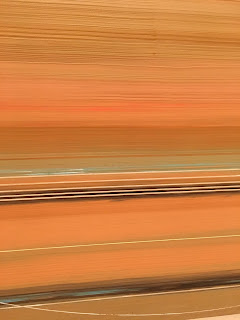Reflection on BMA Trip

Last week the 2-D Design class visited the Baltimore Museum of art to study and appreciate works of art that engaged the student and theme of the class. When wondering around the BMA looking for pieces of art to examine, I found it especially hard to sit down and admire art on the more classical side. Once, I reached the modern art section my eyes immediately latched on to American artist Edward Clarks piece "Earth Signs". The painting "Earth signs" roughly 10ft by 15ft instantly reminded me of the deserts in Phoenix Arizona. Each line spread across the canvas reminded me of heatwaves rising in an empty desert. The circular line that acts somewhat like a boarder and prevents my eyes from falling off the canvas. The turquoise, sand, and clay colors further my feelings of being alone in the desert, but although I am alone I still feel comforted by the size and colors of the painting. The second painting I encountered that absorbed me was "Evening...
